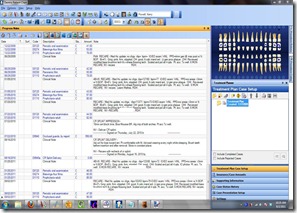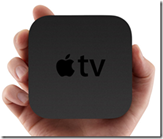 It is really hard to decipher what Microsoft is doing these days, and it is really hard to watch them screw up as badly as they are. Microsoft, a huge conglomerate, proved at CES that it is so far off track and so sluggish, that it cannot and will not deliver what consumers want. It is for this reason that Microsoft should be split and Steve Ballmer should go.
It is really hard to decipher what Microsoft is doing these days, and it is really hard to watch them screw up as badly as they are. Microsoft, a huge conglomerate, proved at CES that it is so far off track and so sluggish, that it cannot and will not deliver what consumers want. It is for this reason that Microsoft should be split and Steve Ballmer should go.
If we look back to the early part of the century, Microsoft was a company putting together some exciting components and creating an accessible ecosystem in response to Apple’s initial successes with the iPod. PlaysForSure worked on multiple devices, Media Center was a growing DVR platform, and the XBox was an impressive gaming system. It looked like Microsoft was well on their way toward growing components of a strong, powerful system. Then Zune happened. It was difficult to see Microsoft abandon PlaysForSure and screw over so many partners when they developed the Zune platform. However it seemed like a good move at the time to do a copycat to iPods/iPhones, just so long as it was part of something bigger. The hardware and software are as good or better than Apple’s and they offer subscription music. That isn’t enough, however, as the Zune needed some drop-dead advantages over Apple’s system. That never happened. Microsoft followed this past year with a copycat phone platform that has gotten good reviews, but honestly, it doesn’t offer that killer advantage over Apple, either, and is doomed for obsolescence, unless…
Microsoft has the pieces, has the chops, and has the money to do something extraordinary with its excellent parts, but it doesn’t. The tragic failure of Steve Ballmer’s Microsoft is that they have no clue, NONE, about what consumers want. It is 2011 and the economy is anemic. We don’t want innovation, we want innervation. We want all of these growing branches whose adoption requires much energy to mesh to make our lives easier. We don’t want to go further out on that proverbial limb. We want those limbs to get stronger. We want this technology to have soul, to know us. I’m sick of working my life around the technology. I want the technology to work for me. Is that so hard to understand?
I am the customer, and I am the boss. It is 2011 and there is no reason I cannot:
- Record an obscene number of TV shows
- Consume recorded, purchased, and rented programming from any device in my domain.
- Execute mundane chores from anywhere in my domain.
I should be able to record premium content from my cable system and send it to a hard drive in my car for my child to watch on a trip. I should be able to watch anything I record from my phone. My phone should recognize that I am coming home after dark and automatically turn on the outdoor lights. My house should know what time I get up, and set the temperature in the house appropriately. I should be able to program my DVR from my phone. I should be able to listen to any subscription music from any approved device in my house. My house should recharge my car with new music every night while it sits in the driveway. My car should be constantly recording video in case there is an accident. My kitchen should have an easy to manage inventory system like I have in my dental office. I should be able to track that inventory with my phone from the grocery store. All of my home’s phone messages should be easily accessible from my cell phone and all of my TVs. Caller ID should appear on all of these devices. I should be able to rent movies from my TV or phone. My car should have full control of the apps on my phone. Finally all of these tasks should be easy.
Some of these actions are currently available, but most of those require difficult setup and management. For example, my CableCARD enabled Windows Media Center system is the best DVR on the planet, but it doesn’t “just workâ€. Setting up home automation in this era should be relatively cheap and easy to setup. I shouldn’t have to become a home automation controller expert in order to turn on the spotlights from my car when I get home at night.
Some of these actions are being blocked by lawyers. However Apple, Zune, Rhapsody, and many others have shown that DRM can work. They register hardware and software to your group account, and that data is safe.
Microsoft has some of the best pieces to this puzzle that exist today.
- Zune – Zune hardware and software is quite comparable to iPods. The advantage is its subscription music service. However as a stand alone ecosystem, Apple dominates this space and the only way to win here is to offer things that Apple can’t; leveraging the other items in this list.
- Windows Phone 7 – The phone is outstanding, but lacks a mature app market. It will never catch the iPhone App store and Android Market. It has to be able to do things these phones can’t. That key is innervation with the other items in this list.
- Windows Media Center – Everyone passionately hates their cable provider’s DVR. Many would agree that Media Center is the best in class here, and it isn’t even close. How can Microsoft pull people away from their easy, loathesome DVRs? Make it easy and reliable, and leverage the items in this list.
- XBox360 – This and Windows 7 are currently the only bright spots in the company. The XBox and Kinect make the best gaming platform available, and the box is powerful enough to be a great point of entry for control of other items in this list.
- Ford Sync/MyFord Touch – Microsoft and Ford have put together a very impressive first generation car system. Others are coming from behind, but Microsoft can do what others can’t, leverage the other items in this list.
- Home Automation – Currently this is an area that is extremely difficult for DIY consumers, and every option is expensive. However people do want these controls, and are willing to spend some money on getting basic controls in their house. This is a wide open field that can easily be dominated, especially if Microsoft can leverage the other items in this list.
Unfortunately Microsoft seems to have absolutely no intent of ever getting these components to work together. This could be a unified brand that makes our live easier. Instead Microsoft seems intent on running another copycat down our throats (Windows Phone 7), offering a 3D chatroom (Kinect neat, but really, Microsoft?), forcing Windows 7 on tablets, and partnering with video content providers for content we already can access.
Steve Ballmer’s vision is severely flawed. Apple’s renaissance came not with its computers, rather their ability to make our cumbersome, annoying music collections easy. We hate our DVRs. We hate managing groceries. We hate closing and opening blinds in our house. We hate walking in the dark. We hate having to listen to the radio in our cars. We hate listening to voicemails in a cumbersome audio stream, We hate being tied to watching content we’ve watched or recorded to one setting. Instead of addressing any of those options, Microsoft has spent the last three years trying to wow us with things that don’t make our lives easier.
There can be great advantages to having a large company. Multiple sources of research can exist and a wide platform can be created under secrecy. However if Microsoft refuses or is not able to manage these sectors adequately, they then become a liability. Microsoft is a blind lumbering dinosaur that needs to be broken up because they will not use any advantages they have. They are doomed for many, many more failures to go along with Kin, PlaysForSure, Zune, WebTV, Live Mesh, Windows Mobile, Home Server, and many more.
2011 feels like an ominous year for the company. After only 9% stock growth in a 5-year period, stockholders are getting antsy and want results. Apple enjoyed great success with the iPad, but the second year for that device will be enormous, and will represent yet another space where Microsoft will be too little too late one day. The key is to make an ecosystem that works. However it is clear that with Ballmer at the helm, the company will not do what it takes to make our lives easier. They can choose to ignore Joe Consumer’s needs, but it won’t be long before someone else comes along and gets his attention.
Tags: Tech // Comments Off on How Microsoft is Failing (Ballmer Must Go)





![navigation-system[1] navigation-system[1]](http://www.blog.danamccall.com/wp-content/uploads/2010/04/navigationsystem1-thumb.jpg)


